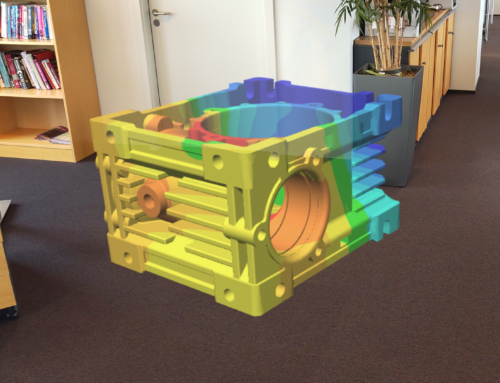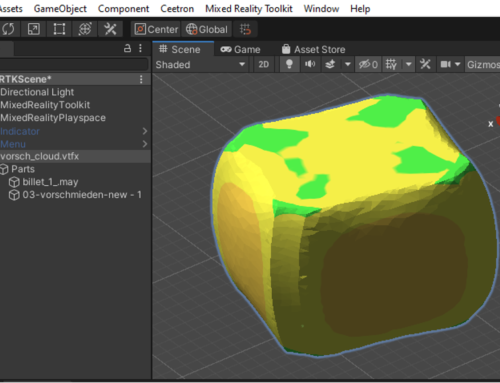(07.12.2018) Yesterday, I attended Microsoft AI Executive Summit in Oslo, Norway. Having spent eight years as research scientist in the area of artificial intelligence (AI) at major research organizations in Norway and Canada, I found it an interesting deja vu with applications of machine learning (ML). Amongst the attendees and presenters, I of course identified the usual suspects: major banks, insurance companies, software companies, and top-tier consultancies. More interesting, from my perspective, was the presence of representatives from major industrial organizations, including Equinor, a major oil company, and DNV GL, the world’s largest ship classification society and a major provider of engineering software to the maritime industries. One of the representatives from DNV GL presented a couple of case studies from their maritime division, though none from CAE. But AI in CAE is of course an intriguing thought …
I decided to explore this line of thought in some depth. With AI, I shall understand ML, an understanding which is in good alignment with how AI practitioners today understand AI. Methodically, I decided to approach the issues at hand by responding to three questions: i) to what extent has AI in CAE been discussed at major CAE conferences; ii) why would dumb ML be relevant in serious engineering work; and iii) isn’t AI in the form of ML all about data, not about models, isn’t CAE all about models in the form of FEA, FSI, and CFD models, and why would then ML be an appropriate tool?
Regarding (i): I decided to start with discussions at COFES (Congress on the Future of Engineering Software), an annual event with thought leaders in CAE, primarily from the US. Here is what engineering.com reported from a discussion at COFES 2018 (source: https://www.engineering.com/DesignSoftware/DesignSoftwareArticles/ArticleID/16911/Game-Over-Humans-No-Match-for-AI-But-What-About-Engineering.aspx): “[AI] has been successful in determining who is low-risk when banks give loans. But can it do something as complicated as analysis? The consensus was that AI could not.”, “[A] sentiment that the problems solved by AI so far were the easy ones, leaving the unsolvable behind. Like simulation.”, “A researcher tells of a year-long effort with AI that produced little result, with the software able to generate positive results in only the most trivial case”, and “[T]here is no large dataset of FEA models solved for stress, for example. So little for machine learning systems to feed on, to grow and learn from.” So, in sum, the CAE community as of today appear to find limited value in AI.
I did not give up here. May be I have to look outside CAE space for ideas for how to use AI in CAE? Let us for example look at medicine, law, and auditing, what are jointly called ‘the professions’. These professional fields have a) the same and higher status in society than engineering; b) same or higher formal qualification criteria for practicing than engineering (typically university education at master’s level + some kind of officially recognized license to practice based on an official exam); and c) generally higher remuneration levels than in engineering. (a)-(c) are not proof that the issues addressed in engineering cannot be more complex than those studied in say medicine, but on the other hand, it is not obvious that they are. A book 2015 by R. Susskind and D. Susskind (“The future of the professions”) summarizes current thinking in the professions: “We can develop high-performing, non-thinking machines that can outperform the best human experts [in the professions]”. The book is widely read in the professions, and has as an example been extensively used as backdrop for major auditing firms’ digitalization initiatives (source: private communication with senior partners in these firms). Which seems to respond to question (ii) above.
Regarding (iii): Yes, FEA, FSI, and CFD are by definition model-based approaches (though V&V is all about data). Which is not proof why ML cannot be the right tool. Let us for example look at the recent report of AlphaZero (an ML approach) vs. Stockfish (a model-based approach) in chess. In a 100-game tournament in 2017, AlphaZero decisively defeated Stockfish (28 wins, 0 losses, 72 draws). So much for the value of models in complex problem solving.
Of course, I have not yet specified the exact use cases where we would expect serious applications of AI in CAE to emerge. Here are just a few: data mining in large SPDM data bases; shape adjustment in generative design algorithms (today based on rules specified by humans); automated design reviews; and mesh generation in pre-processing.
So what are the implications for the CAE community? What are the implications for Ceetron, as provider of 3D visualization software? In my opinion: Yes, some of the routine simulation work may be done by machines, resulting in job losses for simulation engineers + a need for AI skills for same. Yes, intelligent and fully automated machines do not need 3D visual representations of simulation results. However, I believe Gartner, the IT industry analysts, summarizes the situation quite well (source: https://www.gartner.com/newsroom/id/3837763): “AI applied to nonroutine work is more likely to assist humans than replace them as combinations of humans and machines will perform more effectively than either human experts or AI-driven machines working alone will.” If true, in the future there will be a need for intelligent 3D visualization for non-routine work. In Ceetron, we are currently exploring novel concepts for such intelligent 3D visualization for non-routine work, for example in the form of immersive and collaborative technologies.
Feel free to contact me if you would like to discuss these ideas with me or our CTO, Fredrik Viken.
Grim
Head of Sales & Marketing







Leave A Comment
You must be logged in to post a comment.